There are tons of different types of bikes out there and you might be asking – what type of bike should I get?
A mountain bike or a city bike, a road bike or a cruiser?…
There are so many bicycle types around, but which one should you choose? How many gears? With or without accessories? Learn the answers to these questions and what kind of bike to choose below.
Let’s begin with the most popular types of bikes that you should first consider when buying a new bike. The chances are that one of these five bike types will suit your needs perfectly. These include mountain bikes, road bikes, hybrid bikes, city bikes, and kids bikes. Let’s find out more about their characteristics and uses.
Contents
1. Mountain Bikes (MTB)
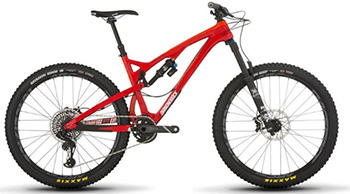 Mountain bikes are the most widely used bicycle type. It was designed for traversing forests and rougher or mountainous terrains. Its construction differs from a typical bicycle in many ways.
Mountain bikes are the most widely used bicycle type. It was designed for traversing forests and rougher or mountainous terrains. Its construction differs from a typical bicycle in many ways.
The most noticeable of these differences are the inclusion of suspension on the frame and fork, larger knobby tires, more durable heavy-duty wheels, more powerful brakes, and lower gear ratios, which are needed for steep gradients and better traction.
Related: Bike Brakes Explained
Substantial controllability and the bigger tire pattern makes riding on technical tracks easier and more comfortable.
MTB is good for riders who don’t care about high speeds but instead focus on crossing terrains that can be hard to pass and enjoy bicycle tours and marathon rides.
There are hardtail (with front suspension) and full-suspension (with front and rear suspension) bikes. The latter kind is considered more comfortable but typically costs and weighs more. The mountain bike is in fact a larger category, which also includes downhill, enduro, trail, XC, all-mountain, and so on. The price of these can vary from 250$ up to that of a good mid-class car.
Related: Road Bikes vs. Mountain Bikes – The Main Differences
Full Suspension Bikes
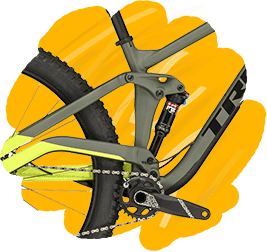
Full suspension bikes are a subtype of mountain bikes. They have suspension both on the fork and on the back end of the frame. They are typically more expensive than hardtail and rigid bikes and are designed for more demanding terrain.
Hardtail Bikes
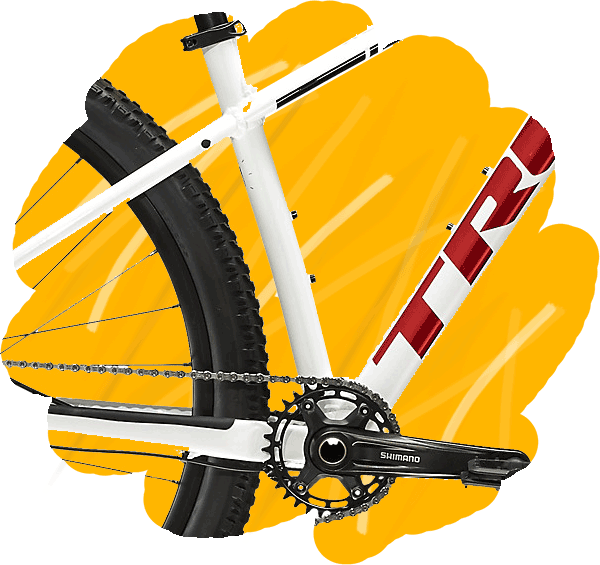
As the name suggests, these are mountain bikes that have only front suspension. The tail is hard, so they are less capable than full suspension bikes when it comes to tackling rough terrain. They are usually also more affordable. They are great for riding harder packed trails, forest, and gravel roads.
Rigid Bikes
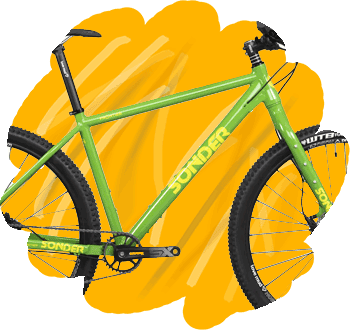
These are types of bikes without any suspension. The frame is completely rigid which makes them the least comfortable type. However, they still have wide and knobby tires and a MTB frame, so they are designed to go off-road. They are a great choice for terrain that is not extreme and riders who want to save weight by eliminating suspension.
Cross Country (XC) Bikes
XC bikes are designed to be ridden across the countryside, on fire roads and gravel roads, but on singletrack trails as well. You can do some challenging stunts with them, but they are typically not intended for long drops and jumps.
XC bikes are either full suspension, hardtail or rigid, with a suspension of 100-120mm of travel. They have a steeper head tube angle, typically in the 69-71-degree range, which is great for sharp maneuvers. The tires are usually 29″ in diameter and less than 2.2″ in width.
Enduro/All Mountain
All-mountain is a cycling discipline that involves tricky downhills and physically demanding uphills. Enduro bikes are then designed to do both. They are typically found with both 27.5 and 29″ wheels, but the 29er’s are becoming more and more common. They have a very slack head tube angle and a lot of travel (front and back), so they can attack larger obstacles when going fast down the hills.
Trail Bikes
Trail bikes are similar to XC bikes, but they are designed for more demanding single tracks and more extreme stunts on the trails. They are characterized by a full suspension setup with more travel, usually between 130-170mm. These bikes also have a slacker head tube angle, typically between 65 and 68 degrees. It gives the rider more stability and lowers the chance of going over the bars. When it comes to the tires, both 27.5 and 29″ are the norm, but they are usually 2.3″ wide and more.
Downhill bikes
As you can guess, downhill bikes are made to attack the most demanding and technical downhills that there are. They are also known as DH bikes and usually have plush front suspension with up to 200mm of travel. The head tube angle is as slack as it gets and the geometry is relaxed. They are great for fast descents but are mostly useless in other cycling categories.
2. Road Bikes
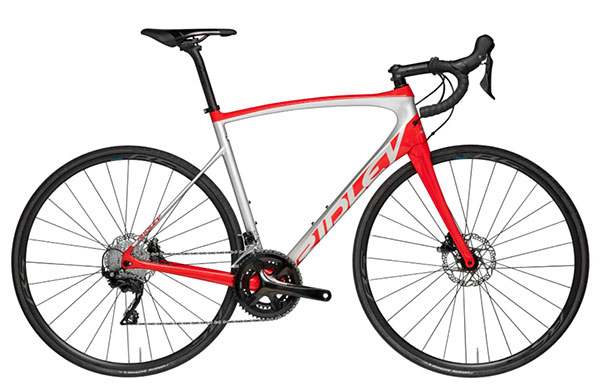
Road bikes are the most specialized of all the types of bikes and are meant only for riding on tarmac. The advantages of road bikes are speed, low weight, and an aerodynamic riding position.
It allows you to ride for longer and see more. Typically, road bikes are more expensive compared to other types, but there are good cheaper models on the market. They are not meant for racing but still offer you a ride full of pleasure and fun.
Something to Consider
It is very important to get the right position on a road bike to avoid injuries. To do this, check that your knees do not lock up when pedaling. Then, move your saddle forward or backward to find the most comfortable position. Road bikes aren’t as comfortable as other types of bikes because they’re meant for speed. But remember – riding a bicycle should never be painful!
Road bike frames are usually made either using aluminum or carbon, just like MTB frames. However, racing road bikes typically have carbon frames, whereas recreational models have aluminum frames.
When riding a road bike, you must pay more attention to the road because it won’t forgive certain mistakes. Sharp curbs or potholes can cut your tires. So, compared to other types of bikes, it is not the most versatile type. Road bikes don’t have front suspension and because of that (and the high-pressure tires), your hands take more beating from road vibrations.
When riding a road bike make sure to ALWAYS wear a helmet!
Prices for road bikes start at $500 and can go up to $7,000.
Road Bikes Subcategories
Apart from standard road bikes, there are several other subcategories to consider, derived from the main type. These are:
- Triathlon/TT bikes
- Cyclocross (CX) bikes
- Gravel / Adventure bikes
- Touring Bikes
At first glance, all of these subtypes have some similarities with road bikes. They have similar frame geometry, use similar materials, and have drop bars.
Learn more: Road Bike Types
However, they also have some significant differences.
For example, TT bikes are more aerodynamic and put the rider in a low, uncomfortable position.
Cyclocross and gravel bikes have wider, knobbier tires and more comfortable geometry.
Touring bikes, on the other hand, have drop bars, but can be made with 26″ tires and sometimes have steel frames.
Triathlon/Time Trial Bikes
These bikes are specialized subtypes of road bikes used for triathlon and time trial races. They have much more aerodynamic frames that go through extensive tests in air tunnels. These bikes put the rider in a very low and aggressive position to further reduce the air resistance.
To achieve such high performance, comfort needs to be sacrificed. Therefore, riding these bikes can turn into suffering over longer distances. Because of that, proper bike fitting is especially important if you plan to ride Triathlon/TT bikes. They are usually quite expensive and cost $3,000 and more.
Cyclocross (CX)
This is a discipline that combines off-road and on-road riding. In a cyclocross race, riders will take their bikes through mud, sand, gravel, dirt, and tarmac. That’s why cyclocross bikes need to have special features, even though they look a lot like road bikes.
CX bikes are characterized by an increased tire clearance on the frame and fork to accommodate for wider tires, a more relaxed geometry, more powerful brakes, and so on. Expensive CX bikes are usually made of carbon, but aluminum and steel frames are popular as well.
Gravel/Adventure Bikes
Gravel bikes have a lot of similarities with both road bikes and cyclocross bikes, but they are still unique. These bikes are designed for going fast on rough terrain. They are also called adventure bikes because they are often used for bikepacking and traveling.
Gravel bikes have a longer wheelbase and a lower bottom bracket compared to road bikes, which gives them more stability on uneven terrain. They also have 32mm or 35mm tires, a tubeless setup, and reliable hydraulic disc brakes.
Touring bikes
Touring Bikes, as their name tells you, are used for traveling over long distances and spending hours in the saddle every day. They are usually bought by people who love bicycle touring and need to carry a lot of stuff with them. They usually have a strong frame made of aluminum or steel, which is easy to maintain and repair. The rear triangle is larger than on other bicycle types, which lets you hang large panniers on the rear rack without rubbing against them with your heel.
Touring bikes are all about comfort. They typically come with wider 26″ wheels, a relaxed geometry, plushy saddle, and drop bars, which lets you stay in the riding position for 10 or more hours a day if necessary.
3. Hybrid Bikes
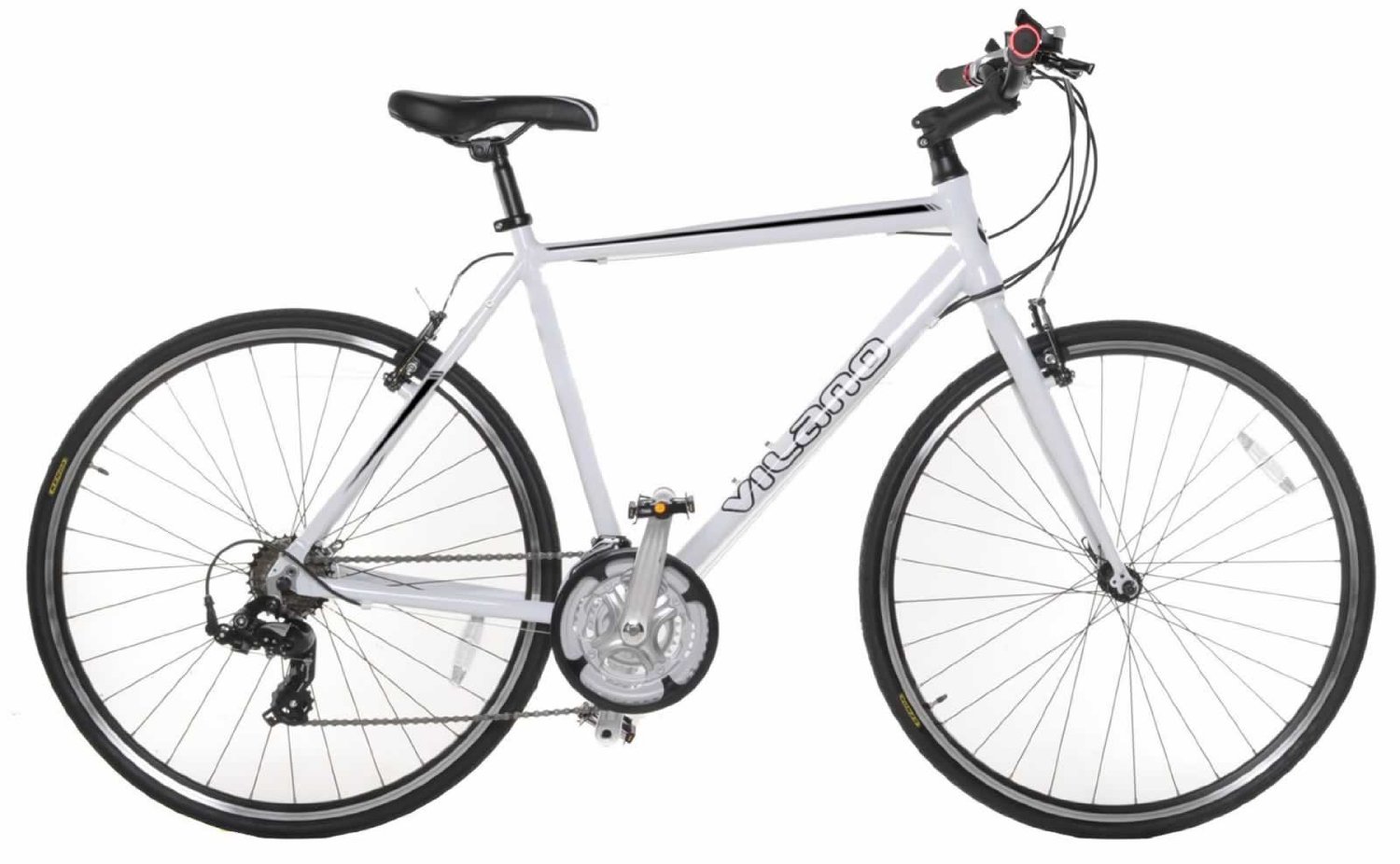
Hybrid bikes are finding more and more supporters due to their being the most versatile bikes on the market. Without favoring one surface over another they allow for comfort and efficiency in forests and streets alike. Typically, a hybrid bike has 21 – 27 gears and 28” wheels, that are around 35mm wide.
It is also possible to equip it with various accessories, making it nearly indispensable for bicycle tours. The larger wheel diameter is a definite advantage, which allows for greater speeds and lowers the rolling resistance.
So, when you are thinking about what type of bike to choose, consider hybrid bikes if your idea is to mostly cruise around on your new bike. Prices are similar to those of mountain bikes – starting at around $250. Here is a good place for discussions related to hybrid bikes.
4. City Bikes
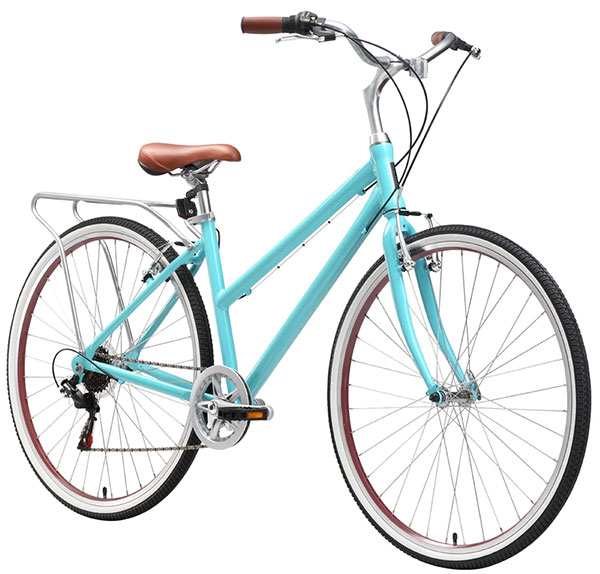
City bikes roll much better on city streets and are usually fully equipped. That is, the standard equipment includes lights, a rear rack, a bicycle stand, fenders, and a chain guard.
They are mainly designed for streets, but they won’t disappoint you on hard-packed forest roads either. City bikes typically have between 1 and 27 gears. The price depends on the equipment and quality and ranges from $250 to several thousand dollars.
If you make it your choice for urban rides, you won’t go wrong. However, there are several other types to consider, including Dutch bikes that are most popular in the Netherlands and the rest of Europe.
5. Kids Bikes
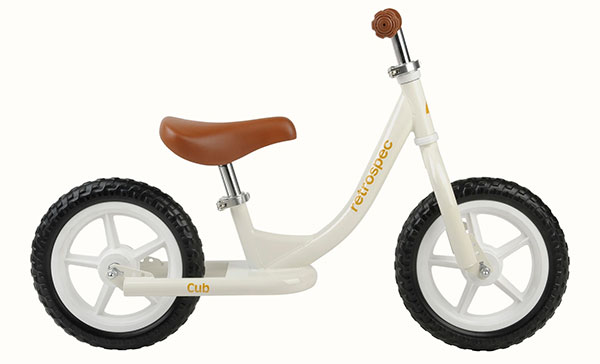
Kids’ Bikes’ wheels range between 12” and 24”. Bicycle riding for kids could start at the age of two, usually on a 12″ balance bike. Bigger tires can be used for 10-13-year-olds, and bikes with gears are usually offered from the age of five.
High-quality and durable kids’ bikes can cost from around $100. Pedal-less Bikes (balance bikes) are great for kids’ physique and usually cost even less. There are also high-end mountain and road bikes for kids, intended for children who love racing at a young age.
6. Fixed/Single Gear Bikes (Fixies)
Fixed and single gear bikes are built or rebuilt to be as minimalistic as possible.
A fixed-gear drivetrain has the drive sprocket (or cog) threaded or bolted directly to the hub of the back wheel, so that the rider cannot stop pedaling. When the rear wheel turns, the pedals turn in the same direction and at the same pace.
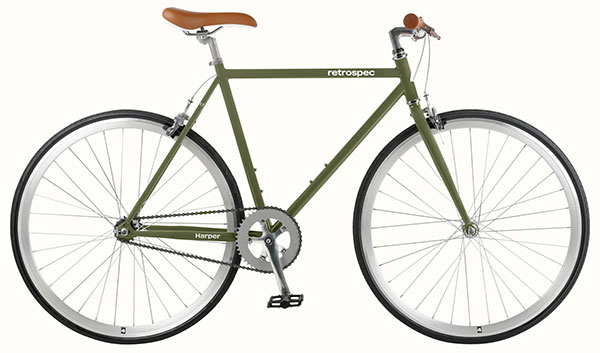
Most fixed-gear bicycles only have a front brake, and some have no brakes at all. If those aspects don’t bother you, then they are very easy to ride on streets and lack parts that can break. They can be commonly seen among bike messengers in big cities because they force them to stay in flow with the traffic and reach their destination more quickly.
Fixies can cost as little as several hundred dollars or as much as several thousand dollars.
7. Cruiser Bikes
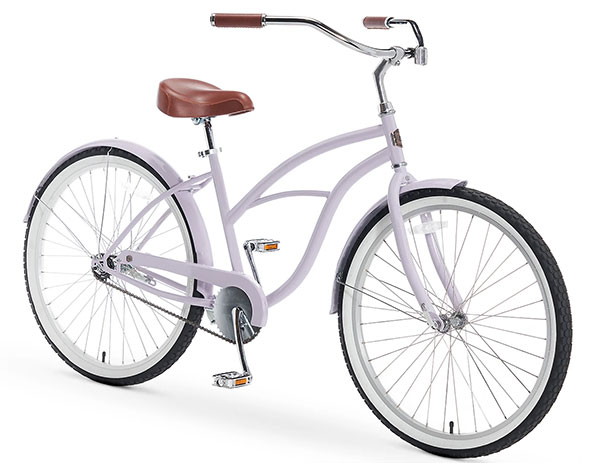
Cruiser Bikes are focused on comfort, style, and affordability, compared to mountain and racing bikes which focus more on performance. This has led them to renewed popularity in recent years. They have a classic “retro” look, reliable mechanical performance offers a comfortable ride, and come at a relatively low price.
If you want to talk with other cruiser bike owners, then Bikeforums.net has a Cruiser subforum that you should visit. Nearly every major bike manufacturer now offers at least one cruiser model, if not an entire line. Therefore, it’s pretty easy to find one that you like and that meets your needs.
They usually cost less than $1,000 and many are priced below $500.
P.S. If you’re lazy enough like I am on the weekends, then the next bike type is the best one for you.
Related: Sixthreezero Around The Block cruiser bike review.
8. Electric Bicycles
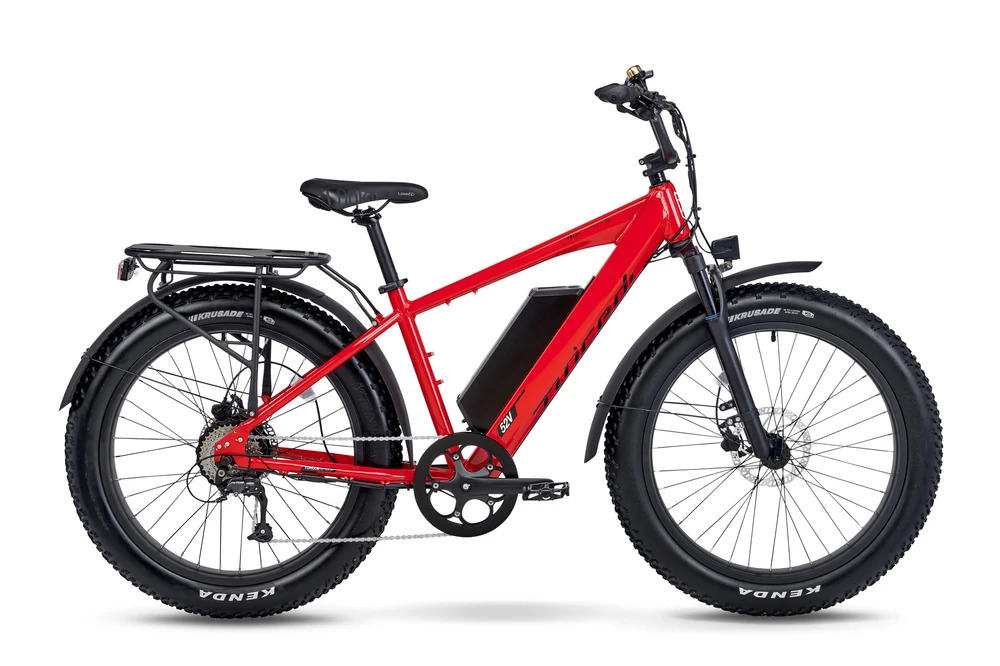
Electric Bicycles, also known as e-bikes or booster bikes, are bicycles with an integrated electric motor that can be used for assistance on the road. There is a great variety of e-bikes available worldwide, from e-bikes that only have a small motor to assist the rider’s pedal-power (i.e., pedelecs) to somewhat more powerful e-bikes which tend to be closer to moped-style functionality. However, all of these retain the ability to be pedaled by the rider and are therefore not electric motorcycles.
Related: How to Choose An Electic Bike
E-bikes use rechargeable batteries and the lighter varieties can go up to 16 – 20 mph. Today, e-bikes come in the form of hybrid bikes, city bikes, cruisers, and even road bikes and mountain bikes. They are typically used by older people or those struggling with injuries. However, commuters who don’t want to get to work drenched in sweat or those who are a bit lazy to deal with hills can use them as well.
They typically cost between $1,500 and $5-6,000 (And some even more).
9. Fat Bikes
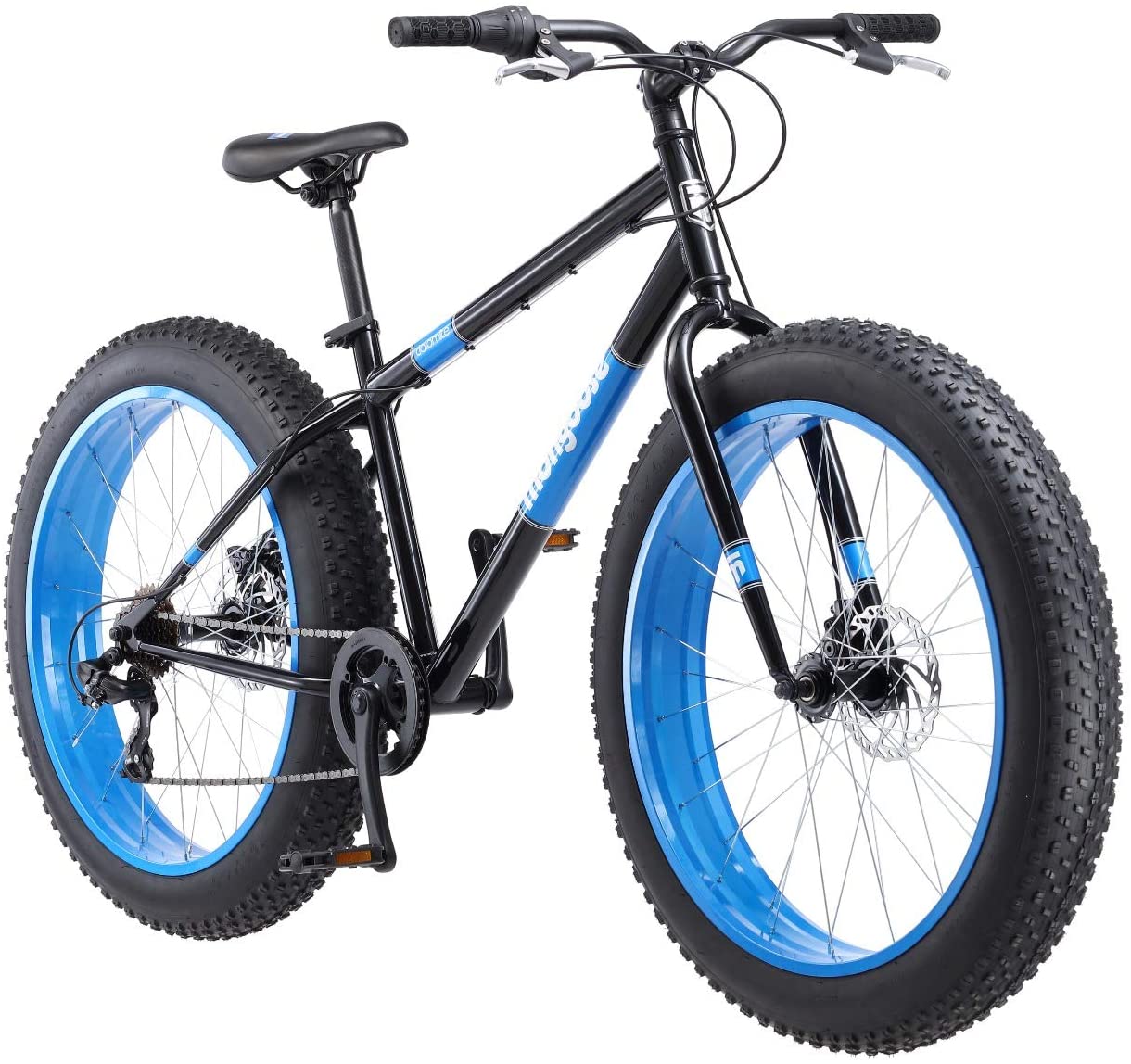
Fatbikes are extremely popular today due to their practicality and their mean looks. They have big 26″ tires which makes them suitable for riding in deep snow, mud, on rocks, and anywhere else where the ordinary MTB isn’t as good.
Related: Best Electric Fat Tire Bikes
Fat bikes are gaining popularity very quickly, just as was the case with cyclocross bikes years ago. If you are planning a long tour off the beaten track, exploring the backcountry where it will be hard to find good roads and trails, then a fat bike is a fantastic choice.
A fat bike can cost you between $500 and several thousand dollars.
10. Cargo Bikes
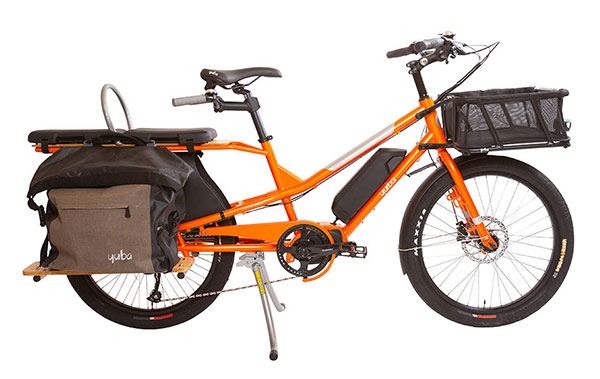 Cargo bikes (also known as Freight bikes) are simple bicycles that have a cargo area at the front or the back of the bike. They can be used to transport goods, pets, and even kids and adults, depending on the size of the cargo area.
Cargo bikes (also known as Freight bikes) are simple bicycles that have a cargo area at the front or the back of the bike. They can be used to transport goods, pets, and even kids and adults, depending on the size of the cargo area.
The cargo area can be a simple platform, on which you can strap your load, or it can resemble a basket or a crate. These bikes are usually made of steel because it provides a sturdier construction. They typically have just one gear, but some might have more.
Cargo bikes are very popular in European cities, especially in Scandinavia and the Netherlands, where there is a good cycling infrastructure for their riding.
They can cost between $500 and several thousands of dollars, depending on what you want to get.
11. Tandem Bikes

The tandem bike concept is known to many, but these bikes are not too popular in the cycling world. That is because you need two people to ride one.
The fact that you need a second person to ride one makes them appealing to many — tandem bikes are a great way to spend time with your loved ones.
A tandem bike allows two people to ride together, regardless of the fitness level of each person.
Even though both cranksets are linked together with a chain and rotate at the same time, the two riders don’t need to produce the same power. One rider can do all the hard work, whereas the other can simply enjoy the ride.
12. BMX Bikes
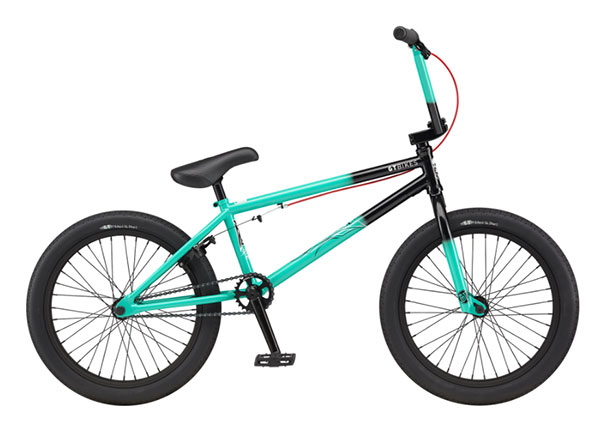
BMX are small bicycles with 20″ wheels that are typically used by children. However, they are not necessarily made for kids. Most of us started on a BMX bike back in the days, but later on moved to different types. BMX bikes are also called Trick bikes because they are used by adults who like doing spins, jumps, and other tricks on them.
These bikes usually have just one gear, which allows the rider to pedal in both directions (go forward and backwards). They often have no brakes, but may include a front brake which helps with some tricks.
BMX bikes are usually quite cheap and cost under $500.
13. Folding Bikes
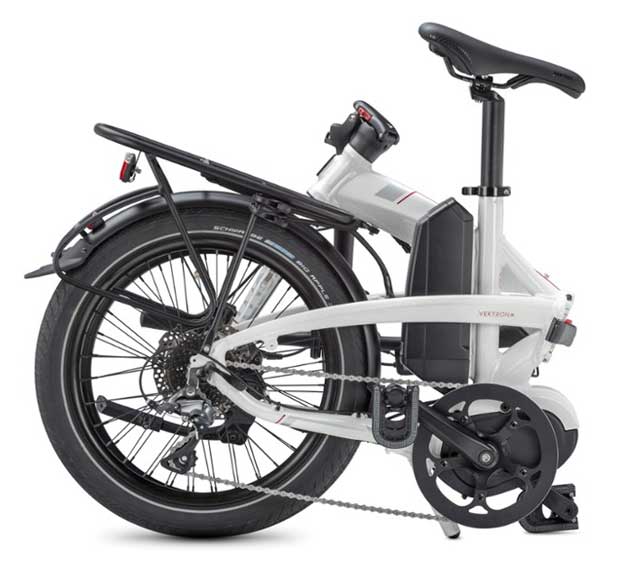
Folding bikes come in different shapes and sizes. They are usually the favored means of transportation for travelers and commuters because of their practicality. These bikes have foldable frames which can be taken apart in a matter of minutes. Therefore, they can easily be packed inside a suitcase and taken on a plane, or carried onto a subway or a train.
Folding bikes, apart from taking less space, also allow travelers to avoid paying expensive air fees. If you pack it inside a suitcase, you can check in with just regular baggage. These types of bikes usually have smaller wheels, but there are some folding bikes with 26″ and 700c wheels as well.
A folding bike can cost you anywhere between $200 and $2,000, depending on the components and features.
14. Recumbent Bikes
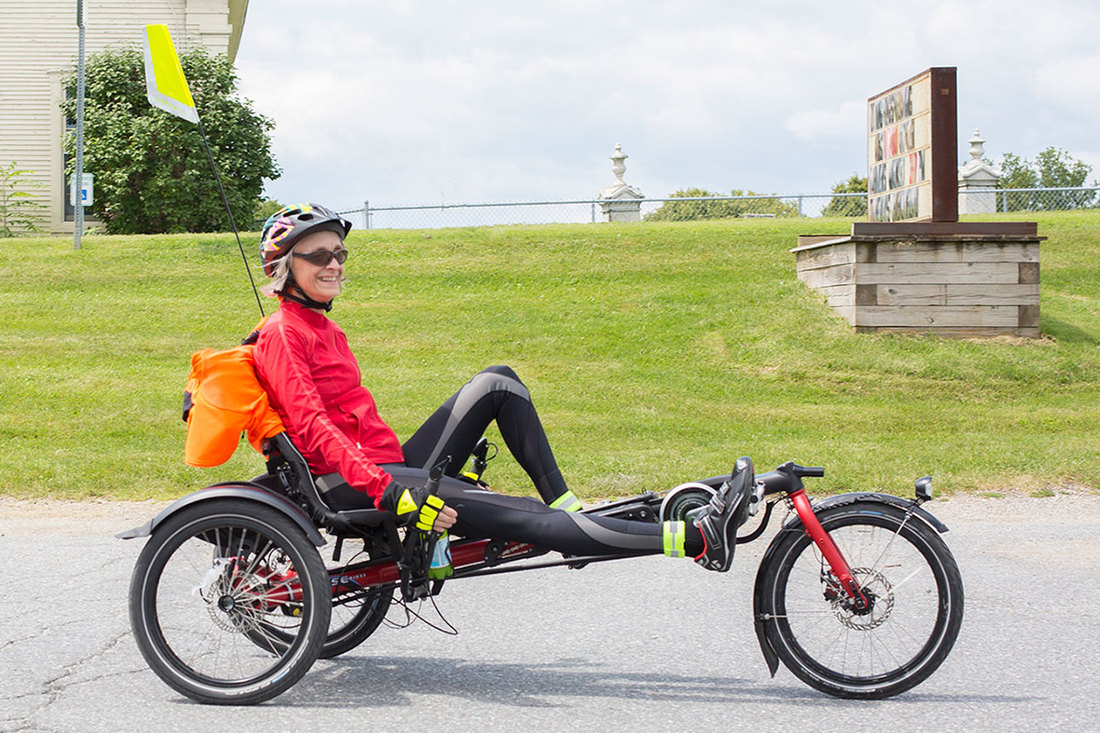
Recumbent bikes are very popular among older riders and those who are suffering from back issues. These types of bikes have a long and low design that almost puts the rider in a lying-down position. They have a seat with a backrest, so the force on the back is not as strong as it is on a regular bike. They are also great for knee issues, because of the forward-pedaling motion, instead of a downward-pedaling one.
Read more: Recumbent Bike Benefits
Even though recumbent bicycles are more challenging to ride uphill, they are a popular choice among some world travelers because of how comfortable they are. If you plan to spend hours on a bike every day and you have back, shoulder, or knee pain, definitely consider this type.
If you decide to go for it, you will need to pay anywhere between $500 and several thousand dollars, depending on how deep your pocket is.
15. Trikes
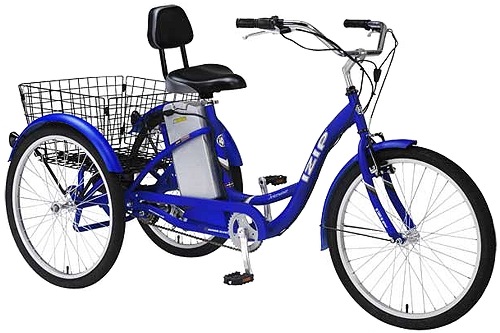
Trikes or Tricycles, as you might guess from the name, are types of bikes with three wheels. They exist in the form of ordinary bikes, but they are also made as recumbents and cargo bikes. This bike design is perfect for carrying loads because there is a lot of room for a cargo area in the back.
Trikes are often popular among kids and among older folks who are not too confident in their riding skills. These bikes are also a popular choice in industrial and warehouse applications because of their practicality.
16. Lowrider Bikes

Lowrider bikes were really popular in the 1960s, but they are still somewhat popular today. Inspired form lowrider cars, these bikes are incredibly customizable, from sissy bars to detailed handlebars.
Where To Shop For Different Bike Types?
- REI – A big selection of different bike types
- evo.com – A large selection of different bicycle types
- TommasoBikes.com – Tommaso road bikes
- JensonUSA – Mainly mountain bikes
Do you know a good shop? Let us know in the comments…

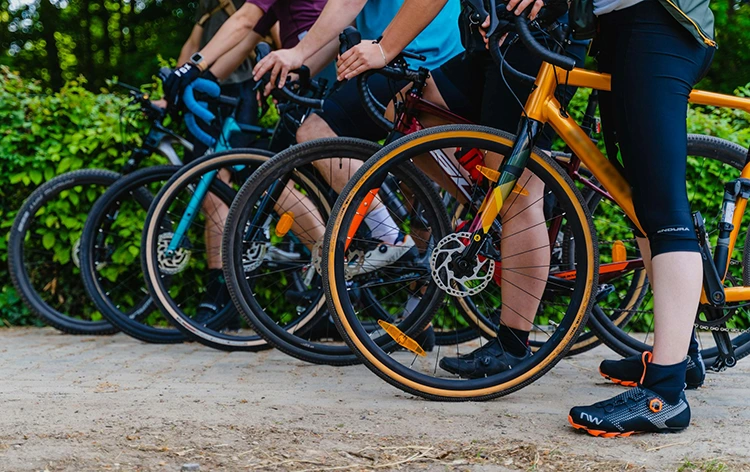
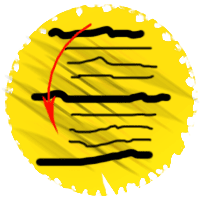



Hi Jeff,
It’s Kate again. Thanks for the recommendation on frame and wheel size.
What do you think would be an appropriate style of bike for my almost-11-year-old daughter?
We plan to use her new bike to ride on streets, paved paths, and some firmly packed dirt trails in the woods. Sometimes we’ll take short rides around the neighborhood and we plan to work up to some longer rides of a few hours.
Thanks for the help!
Kate
Hi Kate,
There are endless possibilities when it comes to the kind of bike she needs. The best way to start is to look for a comfortable commuter bike type. If you check out this link and scroll below, you might find something that will fit her. But show her other bikes like: Best Entry Level Hybrid Bikes Best Hardtail Mountain Bikes and Best Entry Level Road Bikes for Beginners.
Hi Jeff,
Could you please recommend the correct size and style bike for my daughter who is almost 11 years old and about 5’1″? I have seen your size chart and I think she would need a 15″ frame, but does the wheel size also matter? How do we choose that? We plan to use her new bike to ride on streets, paved paths, and some firmly packed dirt trails in the woods. Sometimes we’ll take short rides around the neighborhood and we plan to work up to some longer rides of a couple hours.
Thanks for the help!
Kate
Hi Kate,
You are right about the frame size for her. I think a 24″ wheel size is good enough. A 26″ might be a little big for her.
Hello sir,
I’m 24yr male height 5′ 8, I need to know about the tyre size and frame size, approx travel distance 20-25km/day for exercising purposes. And are hybrid cycles better? (I had upper back injury, now recovered with minimal residual pain )
Hi Vikas,
A medium size frame of 16” or 17″ is something I would recommend for you. Since you are getting back to cycling after an injury I would suggest a bike with a more relaxed geometry like a hybrid bike or a hardtail mtb(if you are into off road riding). Have a look at my post about hybrid bikes to see if anything strikes your fancy. Feel free to ask me questions.
Hi!
You have a lot of good info. I’m looking for a bike for my 12 year old son. He had a BMX but is now out of commission. He is wanting to get into a multi-speed bike and knowing boys they like to jump curbs. What is the best option for him?
Hi Tamara,
First of all we need to know his height so we can determine the right frame size. Most kids his age are starting to get into either road cycling or mountain biking. I think the the right choice if he is into jumping curbs. Do let me know so I can help.
Hi! I am 5″3′. Bad back and knee issues. Have a cement/gravel trail in the neighborhood. What bike would you suggest?
Thanks in advance.
Hi Usmani,
I suggest you get a bike with a more relaxed geometry such as those found in hybrid, MTB and city bikes. A wrong frame size can also contribute to this. Your “sweet spot” is a 15″ frame. This falls under the small category. Have a look at my post about the best hybrid bikes of 2020.
Hi, I am 59 yrs old , 183 cms and weigh 194lbs . My in-seem 89 cms. I wish to buy a cycle for riding around my city and countryside gravel roads 20 to 30 kms . Have a slight back ache and knee joint pain and I guess I would need raised gentle handle bar . Budget is not a major constraint 🙂 . What brands and model ( size of tyre and frame) would you suggest for me. Thank you
Hi George,
I suggest a hybrid bike. The geometry is easy on the back. You also need a frame size that’s 18″. I posted an article about the The Best Hybrid Bikes Today to help you choose the right one for your style of riding. You might also want to check out my article about CTY series which I am sure will interest you. Good luck. Do let me know if there is anything else.
Hi! So happy I came across your website. I’m 5’5,26” inseam & live in a big city. I wanna bike for exercise, I’ll probably be riding with a large bike group around the city. The group doesn’t really bike for speed, but I still want to be able to keep up. Also needed for running short errands in the neighborhood. I don’t want to spend more than $500. What would you recommend? Type, size, or brand? Help! I know nothing about bikes and don’t feel like shopping around forever.
Hi Jen,
You’ve come to the right place! To start with, you will be needing a bike that is good for paved roads and urban cycling. A “medium’ frame size is recommended for you. For hybrid and city bikes that means a 16” frame. For road bikes that’s under the 51-52-53 cm range. Here’s a link for the types of bikes that’s best for urban cycling. There are those that are within your price list.
Hi. I am a 72 year old woman just 5 feet in height. I am wanting to get a bike just for riding around the neighborhood on sidewalks and streets. I would like to keep it under $250 since I am on a limited budget. What would you recommend.
Hi Linda,
I’ve found a perfect bike for you. Do let me know what you think. It has a price range that you are looking for.
Hello Jeff,
My husband and I are getting into riding for health and recreation. I am 55 and weigh 130 lbs, and 5’4″. My husband is in his 54 and weighs 274lbs at 5’7″. What bikes do you recommend to get started?
Hi Linda,
I’d recommend getting a Best Entry Level Hybrid Bikes – The TOP 9 for both of you.
Hi Jeff
Very useful article and I also checked out the hybrid bikes post. I’m 6’3, 250 and I’m buying a bike for casual riding with my daughter. Short, moderate hills, generally paved suburban roads. Any recommendations?
Hi Jason,
Getting a hybrid bike can be fun. Let me know if you are looking for other types.